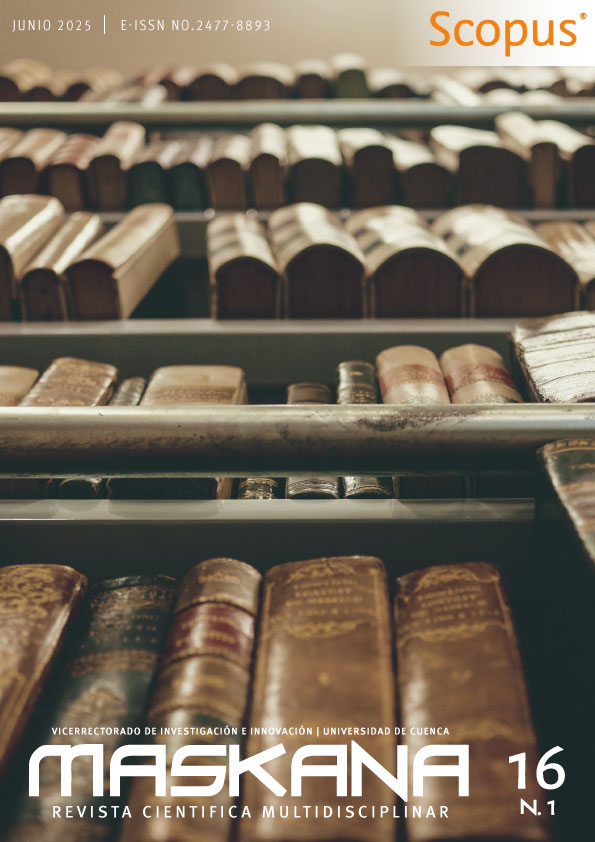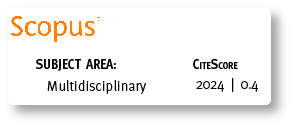Knowledge and practices regarding the use of medicinal plants during pregnancy in Costa Rica
DOI:
https://doi.org/10.18537/mskn.16.01.02Keywords:
medicinal plants, pregnancy, perception of use of medicinal plants, risk of using medicinal plants, ethnobotanyAbstract
This study aims to identify the knowledge and practices regarding the use of medicinal plants and analyze how gender and educational level influence such knowledge and practices during pregnancy in Costa Rica, addressing research gaps. A total of 144 individuals aged 20 to 49 were surveyed. 59% of respondents were aware of the risks associated with the use of medicinal plants during pregnancy, with women showing greater knowledge than men. A higher educational level was associated with greater concern about risks such as abortion and fetal malformations. The most commonly used plants were Matricaria chamomilla, Ruta graveolens, Satureja viminea, and Zingiber officinale, with leaves being the most frequently used part and infusions the most common preparation method. These plants were primarily used to treat nausea and gastrointestinal issues. The study concluded that further research is needed to guide healthcare professionals and the public on the safe use of medicinal plants during pregnancy in Costa Rica.
Downloads
Metrics
References
Abdullah, A. y Andrabi, S.A.H. (2021). An approach to the study of traditional medicinal plants used by locals of block Kralpora Kupwara Jammu and Kashmir India. Revista Internacional de Estudios Botánicos, 6(5),1433-1448.
Akinsulie, A., Burnett, C., Bergfeld, W. F., Belsito, D. V., Cohen, D. E., Klaassen, C. D., Liebler, D. C., Marks, J. G., Jr, Peterson, L. A., Shank, R. C., Slaga, T. J., Snyder, P. W. y Heldreth, B. (2023). Safety assessment of Cocos nucifera (coconut)-derived ingredients as used in cosmetics. International Journal of Toxicology, 42(1_suppl), 23S-35S. https://doi.org/10.1177/10915818231157751
Al-Ani, B.T., Al Saadi, R.R. y Reshan, R.G. (2020). Investigating effects of Salvia officinalis (Sage) on development of mice embryos kidney and some hormonal effect of treated mothers. Indian journal of Forensic Medicine and Toxicology 14(1), 649-654. https://doi.org/10.37506/ijfmt.v14i1.124
Allen, S., Natale, B. V., Ejeckam, A. O., Lee, K., Hardy, D. B., y Natale, D. R. C. (2024). Cannabidiol exposure during rat pregnancy leads to labyrinth-specific vascular defects in the placenta and reduced fetal growth. Cannabis and Cannabinoid Research, 9(3), 766-780. https://doi.org/10.1089/can.2023.0166
Alotaibi, M.F. (2020). Pimpinella anisum extract attenuates spontaneous and agonist-induced uterine contraction in term-pregnant rats. Journal of Ethnopharmacology 254, 112730. https://doi.org/10.1016/j.jep.2020.112730
Arbati, A., Maham, M., y Dalir-Naghadeh, B. (2021). The effect of cinnamaldehyde on the contractility of bovine isolated gastrointestinal smooth muscle preparations. Veterinary Research Forum: An International Quarterly Journal, 12(3), 313-318. https://doi.org/10.30466/vrf.2020.112185.2670
Balarastaghi, S., Delirrad, M., Jafari, A., Majidi, M., Sadeghi, M., Zare-Zardini, H., Karimi, G., y Ghorani-Azam, A. (2022). Potential benefits versus hazards of herbal therapy during pregnancy; a systematic review of available literature. Phytotherapy Research 36(2), 824-841. https://doi.org/10.1002/ptr.7363
Bernstein, N., Akram, M., Yaniv-Bachrach, Z., y Daniyal, M. (2021). ¿Es seguro consumir plantas medicinales tradicionales durante el embarazo? Phytotherapy Research 35(4), 1908-1924. https://doi.org/10.1002/ptr.6935
Campos, M. M., Cabral, K. S., Nunes, P. C. R., Estevam, A. A. V., Bianco, B. T., Alves, B. B. L., ... y de Oliveira, S. (2023). Efectos embriotóxicos, teratogénicos y abortivos causados por el consumo de plantas de uso alimenticio y medicinal. Revista Presença, 9(20), 152-217.
de Abreu Tacon, F.S., de Moraes, C.L., Carvalho, V.P., Ramos, L. L. G., Cruz, N., and do Amaral, W.N. (2020). Plantas medicinales, fitoterapia y embarazo: efectos sobre la morfología fetal. Revista Brasileira de Plantas Medicinais 22, 137-144. https://www.sbpmed.org.br/admin/files/papers/file_cf6cM9yEyNzX.pdf
Dekkers, G.W., Broeren, M.A., Truijens, S.E., Kop, W.J., y Pop, V.J. (2020). Factores hormonales y psicológicos en las náuseas y vómitos durante el embarazo. Psychological Medicine 50(2), 229-236. https://doi.org/10.1017/S0033291718004105
Evanski, J. M., Zundel, C. G., Baglot, S. L., Desai, S., Gowatch, L. C., Ely, S. L., Sadik, N., Lundahl, L. H., Hill, M. N., y Marusak, H. A. (2024). ¿El primer "golpe" al sistema endocannabinoide? Associations between prenatal cannabis exposure and frontolimbic white matter pathways in children. Biological Psychiatry Global Open Science, 4(1), 11-18. https://doi.org/10.1016/j.bpsgos.2023.09.005
Hernández-Salón, S.L., y León-Chavarría, J.A. (2023). Diversidad y percepción de las plantas medicinales utilizadas por la población costarricense. Revista Internacional de Medicina Herbolaria 11(3), 46-55. https://doi.org/10.22271/flora.2023.v11.i3a.869
Horackova, J., Chuspe, M.E., Kokoska, L., Sulaiman, N., Clavo Peralta, Z.M., Bortl, L., and Polesny, Z. (2023). Inventario etnobotánico de las plantas medicinales utilizadas por los herbolarios Cashinahua (Huni Kuin) de la provincia de Purús, Amazonía peruana. Revista de Etnobiología y Etnomedicina 19(1), 16. https://doi.org/10.1186/s13002-023-00586-4
Im, H.B., Ghelman, R., Portella, C.F.S., Hwang, J. H., Choi, D., Kunwor, S. K., Dircinha, S., Araújo, T., y Han, D. (2023). Assessing the safety and use of medicinal herbs during pregnancy: a cross-sectional study in São Paulo, Brazil. Frontiers in Pharmacology 14, 1-14 https://doi.org/10.3389/fphar.2023.1268185
Jackson, I. L., Akpan, M. R., Akwaowoh, A. E., y Sampson, V. I. (2024). The attributes and determinants of herbal medicine use among pregnant women attending antenatal clinics at three hospitals in Uyo, Nigeria. Journal of Herbal Medicine, 46(100891), 100891. https://doi.org/10.1016/j.hermed.2024.100891
Jahan, S., Mozumder, Z. M., y Shill, D. K. (2022). Use of herbal medicines during pregnancy in a group of Bangladeshi women. Heliyon, 8(1), e08854. https://doi.org/10.1016/j.heliyon.2022.e08854
Kachmar, M.R., Naceiri Mrabti, H., Bellahmar, M, Ouahbi, A., Haloui, Z., El Badaoui, K., Bouyahya, M., y Chakir., S. (2021). Traditional knowledge of medicinal plants used in the Northeastern part of Morocco. Evidence-Based Complementary and Alternative Medicine. https://doi.org/10.1155/2021/6002949
Kéry, Á. (2023). Evolución de los conocimientos sobre compuestos activos de origen natural farmacognosia en el siglo XXI. En: Szöke E, Kéry A, Lemberkovics. E (eds) From Herbs to Healing. Springer International Publishing, pp.1-4. Cham. https://doi.org/10.1007/978-3-031-17301-1_1
Kothari, B., y DeGolier, T. (2022). The contractile effects of Matricaria chamomilla on Mus musculus isolated uterine tissue. Journal of Pharmacognosy and Phytochemistry 11(4), 303-308. https://doi.org/10.22271/phyto.2022.v11.i4d.14475
Leite, P. M., Camargos, L. M., & Castilho, R. O. (2021). Avances recientes en fitoterapia: A Brazilian perspective. European Journal of Integrative Medicine, 41(101270), 101270. https://doi.org/10.1016/j.eujim.2020.101270
Locklear, T.D., Pérez, A., Cáceres, A., y Mahady, G.B. (2013). La salud de la mujer en América Central: la complejidad de los problemas y la necesidad de centrarse en la atención sanitaria indígena. Current Women`s Health Reviews 9(1), 30-40. http://doi.org/10.2174/1573404811309010002
Mustofa, F.I., y Rahmawati, N. (2020). Medicinal plants and practices of Rongkong traditional healers in South Sulawesi, Indonesia. Biodiversitas 21(2), 642-651 https://doi.org/10.13057/biodiv/d210229
Nigussie, T., Azanaw, G., y Shumye, M. (2023). Incidence and Predictors of Dystocia of Active First Stage of Labor at Debremarkos Comprehensive Specialized Hospital Amhara, North West Ethiopia, 2022/2023. Research Square 1, 1-23 https://doi.org/10.21203/rs.3.rs-3132594/v1
Pattanayak, S. (2024). Auto-tratamiento entre animales mediante el uso de hierbas suculentas para luchar contra los parásitos y su posible uso como medicina humana. Exploratory animal and medical research, 14(Parasitology Special), 18-28. https://doi.org/10.52635/eamr/14(s1)18-28
Quzmar, Y., Istiatieh, Z., Nabulsi, H., Zyoud, S.E.H., y Al-Jabi, S.W. (2021). The use of complementary and alternative medicine during pregnancy: a cross-sectional study from Palestine. BMC Complementary Medicine and Therapies 21(1), 1-10. https://doi.org/10.1186/s12906-021-03280-8
Solano-Acuña, A.S., y Rodríguez-Brenes, S. (2015). Embarazo, parto y postparto, un estudio de caso en el Territorio Indígena de Coto Brus, Costa Rica. https://repositorio.una.ac.cr/handle/11056/22780
Organización Mundial de la Salud. (2013). Estrategia de la OMS sobre medicina tradicional: 2014-2023. Organización Mundial de la Salud. https://www.who.int/publications/i/item/9789241506096
Wondemagegn, A.T. y Seyoum, G. (2023). A multicenter study on practices and related factors of traditional medicinal plant use during pregnancy among women receiving antenatal care in East Gojjam Zone, Northwest Ethiopia. Frontiers in Public Health 11: 1035915. https://doi.org/10.3389/fpubh.2023.1035915
Downloads
Published
How to Cite
Issue
Section
License
Copyright (c) 2025 Sandra Henández-Salón, Denyer Sánchez-Pérez, Javier Alonso León-Chavarría, Nicol García-Carvajal

This work is licensed under a Creative Commons Attribution-NonCommercial-ShareAlike 4.0 International License.
Copyright © Autors. Creative Commons Attribution 4.0 License. for any article submitted from 6 June 2017 onwards. For manuscripts submitted before, the CC BY 3.0 License was used.
![]()
You are free to:
 |
Share — copy and redistribute the material in any medium or format |
 |
Adapt — remix, transform, and build upon the material for any purpose, even commercially. |
Under the following conditions:
 |
Attribution — You must give appropriate credit, provide a link to the licence, and indicate if changes were made. You may do so in any reasonable manner, but not in any way that suggests the licenser endorses you or your use. |
| No additional restrictions — You may not apply legal terms or technological measures that legally restrict others from doing anything the licence permits. |









